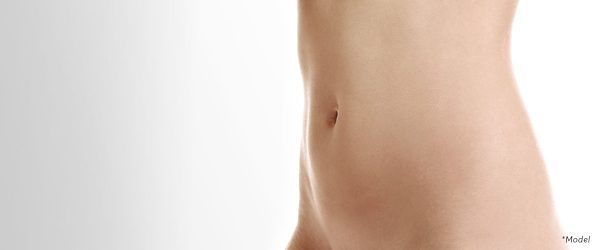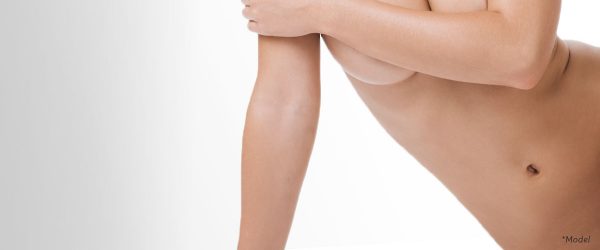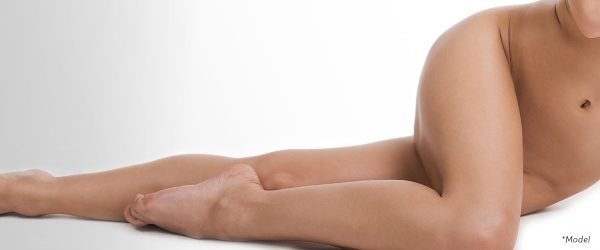Despite the great advances that have been achieved since the advent of Suction Lipoplasty, surgeons and patients are still unable to restore skin elasticity. When weight gain and loss, age, pregnancy and disease cause skin to be loose, more traditional surgical techniques must still be used to tighten skin and re-contour it to the underlying shape.
Just as when an individual loses several inches around the waist, clothing must be altered by taking it in or removing a dart, in other locations, the skin, which is like the fabric covering the underlying body, must be altered by removal of excess skin.
By body contour surgery, we usually include suction assisted lipoplasty and procedures such as abdominoplasty, thigh lifts, and upper arm tightening (brachioplasty) surgery. Suction assisted lipoplasty may be used to complement the other, more traditional body contouring procedures including mommy makeover surgery.
The most common body contouring operation, aside from liposuction, is abdominoplasty, or the Tummy Tuck, as it is commonly referred to by lay persons. Though there are mini-operations available for the abdomen that have become possible since the advent of liposuction.
In the average patient, who comes with skin laxity and some fat accumulations in the abdomen, flanks and other regions after one or more pregnancies or previous surgical procedures, a full abdominoplasty with a lengthy incision is required.
In fact, the most common form of abdominoplasty which I currently use is not a lesser variation of a traditional procedure, but is, instead, more extensive, because so much more is now known about how to achieve best results.
Buttock and thigh lifts are done via incisions which are placed along the panty or bikini line through the hip and low back region for the outer thigh and buttock, and high up the inner thigh at the junction with the groin and inner thigh. These operations are similar in concept to the abdominoplasty, but are less commonly done.
Body Procedures
FAQs
Should I wait to have a tummy tuck until I have had all my children?
In general, if you are planning to have more children, some of the benefits may be lost. However, if you have lost weight and have excess skin as a result, feel self-conscious about your appearance, the results of surgery may justify the operation at any time.
Won’t liposuction take care of it?
When there is skin looseness and the underlying muscles are stretched, suction will not improve the appearance and may even worsen it. If you have had children and you want the contour of your tummy improved, the chances are liposuction alone will be disappointing.
Sometimes when there are significant fat and some skin looseness, suction may not give a predictable result. In some cases, it is reasonable to start with a preliminary suction operation, with the understanding that a secondary (tightening) body contour surgery may be needed.
Why do I need to have such a long scar?
Major body contour surgery such as a tummy tuck is much like tailoring. If we take out all or most of the skin from the belly button, we need to taper our skin removal to the sides, in order to prevent bunching up and bulges. It’s a little like “taking in” a loose pair of jeans along an inseam; you can’t just do it at one point. It needs to be done all the way down the inseam. Unfortunately, scars are the price of smoother, tighter skin and tighter muscles. Generally, because scars fade over time and are placed in locations where they are relatively well concealed, the trade-off is well worth it. Feel free to speak with one of our Broadway Cosmetic Plastic Surgery Centre professionals about your scar concerns.
When can I start exercising again?
I encourage walking during the first few days, light aerobic activity at two weeks, and full exercise routine with abdominal exercises at six weeks.
To learn more about Tummy Tucks contact Broadway Cosmetic Plastic Surgery Centre today.
Additional Information
Body Contouring: A History
Removal of a fold of skin plus the underlying fat dates back to the early part of the 20th century. In the 1960’s, the operation was refined considerably and popularized by a Brazilian surgeon, Pitanguy. He also did early thigh and buttock lifts. Many of his improvements are with us to this day. Further advances were made, particularly in incision design, by a Quebec surgeon, Paule Regnault, who also worked on innovations in breast lift and reduction surgery.
However, the two most significant advances in the last quarter century have been the advent of suction lipoplasty, which allowed for treatment of the abdomen fat, with or without skin removal, and the deep layer support techniques of Dr. T. Lockwood of Kansas City. He carefully looked at the anatomy of the abdominal wall, and decided that there was merit in using the superficial fascia, a layer of thin but strong tissue, part way down in the fat layer, as the main means of support, in repairing the skin incisions during both abdominoplasties and thigh lift procedures.This layer had been known to surgeons and anatomists for many years, but most plastic surgeons never felt it had enough strength to be of significant use in repairing the abdominal wall and it was often either ignored or only loosely stitched.
Body Contouring: The Assessment
The usual patient presenting for abdominoplasty has had previous pregnancies, and has usually decided not to have any more children. (Future pregnancies will tend to re-stretch the skin and may cause recurrence of the shape the patient feels is unsatisfactory). She may or may not have had Caesarean sections, or other abdominal surgery.
The low gynecologic and Caesarean scar (called a Pfannenstiel incision by gynecologists) is often adherent to the underlying muscle, and above the incision, the non-adherent abdominal skin and fat often droop, and fold over the site of the incision. In some cases, with skin lying against skin, there may be so much problem with moisture causing skin irritation, that the medical insurance will pay for a procedure to reduce the overhanging skin, but a formal, cosmetic abdominoplasty will usually require patient payment.
Body Contour Gallery 2
The vertical abdominal muscles (the rectus abdominis) have often been stretched, and they may be separated down the midline, giving bulging of the central abdomen. In more severe cases, there may even be a hernia of the belly button (umbilicus). In a hernia, not only does the abdomen bulge, but some of the contents of the abdominal cavity (internal organs, fat, etc.) may bulge through a weak part of the abdominal wall. Other old surgical scars may further distort the shape of the abdomen.
Occasionally, I also have male patients who want abdominoplasty surgery. Men often carry most of their trunk fat inside the abdominal cavity, rather than under the skin, and abdominoplasty is somewhat less effective at reducing and recontouring in men. Yet, they will usually have a satisfying result.
In patients with less dramatic changes, a modified, or mini-abdominoplasty is effective. In this procedure, there is less excess skin and a significant amount of fat, so the major procedure is liposuction with the addition of a smaller skin tightening procedure. At one time, about three quarters of my patients seemed to fall into this category; the reverse is now true. This is because I feel I must do a full abdominoplasty in most of my patients to give them the result they have envisaged for themselves; a lesser operation leaves them somewhat disappointed.
Other Body Contouring Procedures
Patients for buttock and thigh lift may initially come to their consultation requesting liposuction, complaining of unsightly fat and cellulite but, because of laxity of the skin and deep tissues, should be told that the results of suction alone may be quite disappointing. While suction offers an operation with little in the way of post-op scars, it will result in further loss of skin tone and likely significant contour irregularities.
For this reason they are offered a lift procedure which, despite the significant scar, will result in a much restored appearance to the thigh and buttock. Some of these patients will have had suction done in the past and wish to have something further done. The situation is similar to patients who have had only suction done in the neck and have residual neck skin and muscle redundancy for which the only treatment is a face and necklift.
The same can be said for the sagging which may occur in the arms. In the right patient, who can manage with the scars during the time they are fresh, a brachioplasty may be valuable.




